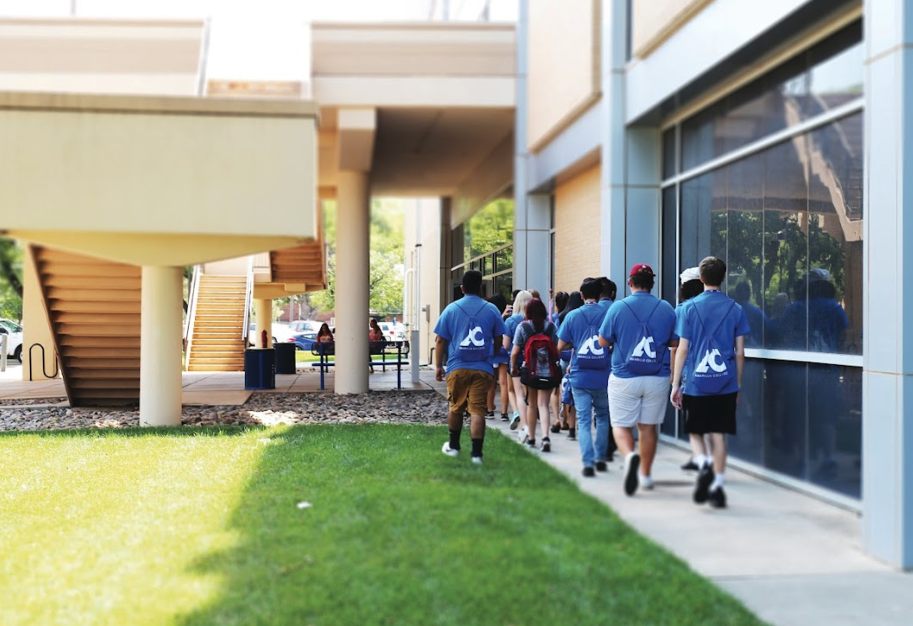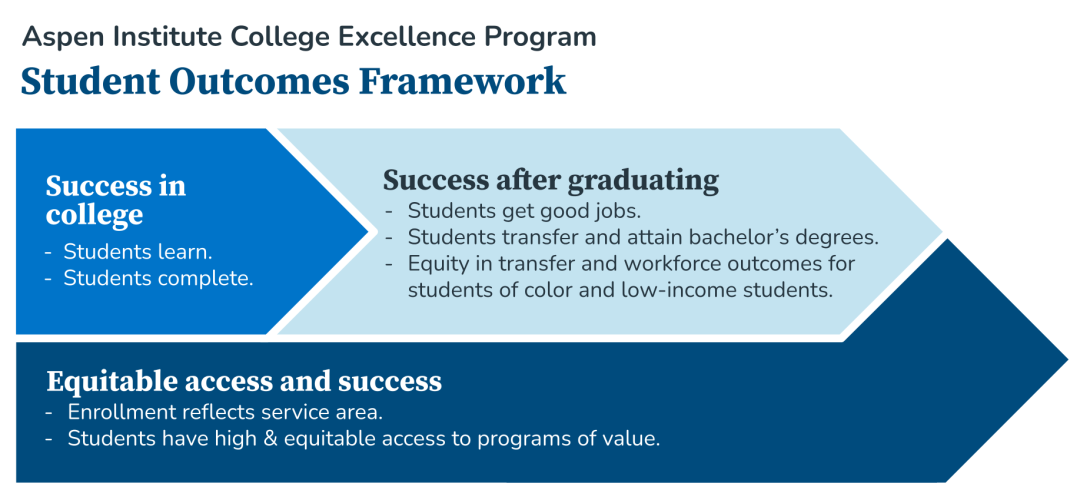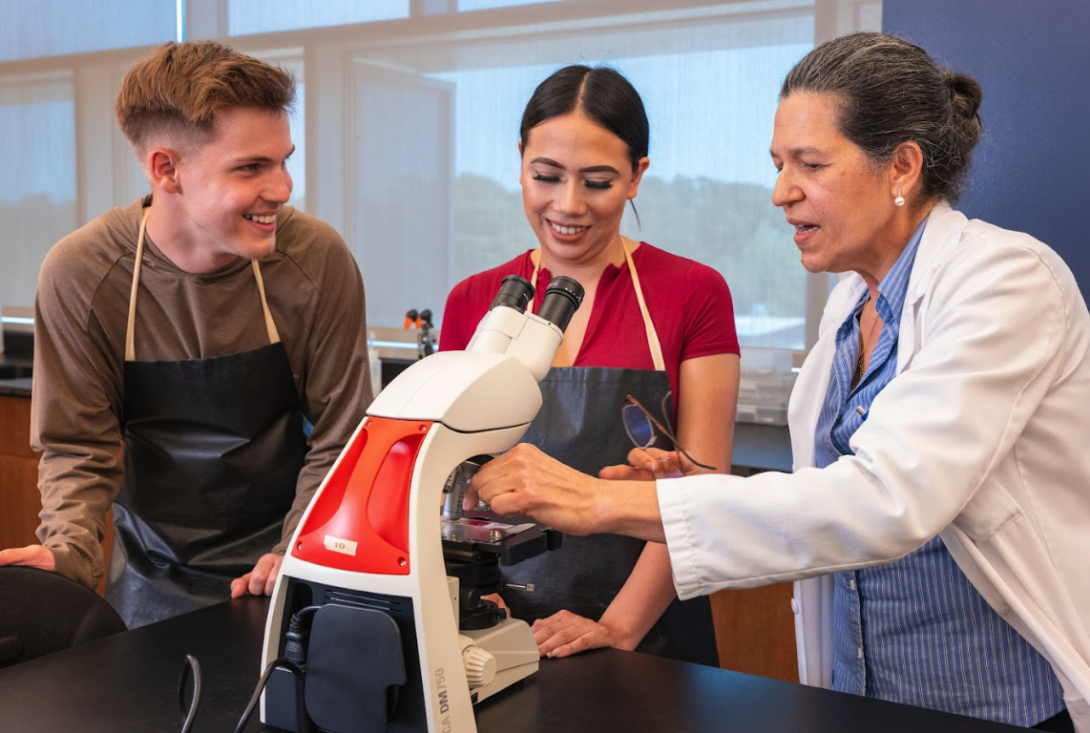
Aspen Prize Exemplars: Student Success After College
Blog Post
Research shows that students enroll in college for one reason above all others: to get a job and advance a career. For community college students, there are two paths to that goal: a workforce credential that provides the skills they need to land a good job right away, or an associate degree that prepares them to transfer and attain a bachelor’s degree (the vast majority of which lead to good jobs).
Post-graduation success is a key component of how we at the Aspen Institute evaluate how well colleges are serving their students and communities. Equitable access, student success while in college, and student success after graduation—all three elements are necessary to make an excellent college.
As we reflect on what we learned in the 2023 Aspen Prize process, we want to highlight how the ten finalists exemplify these three components, in the hopes that other colleges can draw inspiration and ideas from them. Here: post-graduation success.

At Imperial Valley College, one of this year’s winners, the idea of post-college success starts in high school. Imperial Valley advisors work closely with high schoolers to choose dual enrollment college courses that are embedded in clear paths to associate degrees that, in turn, pave the way to bachelor’s degrees. This is especially remarkable because Imperial Valley, situated near California’s southern border, is in a rural region with some of the state's lowest bachelor’s attainment rates. Imperial Valley leaders are building a college-going culture from the ground up.
At the same time, Imperial Valley partners with four-year universities to develop bachelor’s pathways in the fields of science, technology, and math—always prioritizing pathways that lead to good (and needed) jobs in the region. The goals are clear: Students need bachelor’s degrees to advance into promising career fields, and the community needs bachelor’s degree graduates to build a bright future for the valley. The results are equally clear: Transfer rates are steadily increasing at Imperial Valley, and over half of students who transfer complete bachelor’s degrees within six years, well above the national average.

Likewise at Broward College, in Florida, strong transfer and bachelor’s attainment rates are the result of purposeful partnerships and student supports. Broward, a Prize finalist, was an early innovator in streamlining transfer to local public universities. Transfer pathways to Florida International and Florida Atlantic universities are co-branded and widely publicized. Students who declare interest in FIU or FAU are guaranteed admission with junior standing at either institution after they complete their associate degree. And before they transfer, Broward students have access to the universities’ advisors, support services, libraries, and sporting events.
At Amarillo College, this year’s other Prize winner, delivering post-graduation success means both meeting current community needs and bringing new jobs to the region. To address a nursing shortage, Amarillo developed a partnership with another college to expand nursing program enrollment and place graduates at short-staffed rural hospitals across the Texas Panhandle. Because many students need a quick path to a life-improving credential, the college also established a new satellite campus that prepares students—via 10-week sprints—for good-paying jobs in cybersecurity, software development, data analytics, AWS cloud computing, and technical project management— jobs that are all relatively new to the region. The impact? Amarillo students, on average, earn over $41,000 the year after graduation, a substantial improvement over what graduates earned just two years ago, and 37 percent more than other new hires in the region.
Engaging with employers via advisory boards allows community colleges to get critical feedback on curriculum, program content, and the skills and attitudes employers seek. Northwest Iowa Community College takes these partnerships further than most, working with employers to create work-based learning opportunities for students and thinking creatively to design internships that help students apply their classroom learning and serve a community need. (Read more about these partnerships in our Guide to Rural Community College Excellence.) Northwest Iowa students reap the benefits: Graduates of the popular Career and Technical Education programs have an amazing 97 percent job placement rate.


At San Jacinto College in Houston, Chancellor Brenda Hellyer took the concept of advisory boards even further, creating “Chancellor’s Advisory Councils” to bring together industry CEOs and college leaders for discussions about long-term industry needs and how to address them. San Jacinto’s strength as a partner for employers is demonstrated in a remarkable investment from LyondellBasell, which invested five million dollars in 2019 for the creation of a Center for Petrochemical Energy and Technology on the college’s campus. This training hub enables students to learn on state-of-the-art equipment, understand industry expectations, and build relationships that can help them find a job upon graduation. (Read more about this partnership in our Community College Guide to Excellence & Equity in STEM Programs.)
Whether via a streamlined path to a bachelor’s degree with regional value or an associate or technical degree that leads to a job right away, these colleges are leading the way in delivering on the promise of post-completion success.
